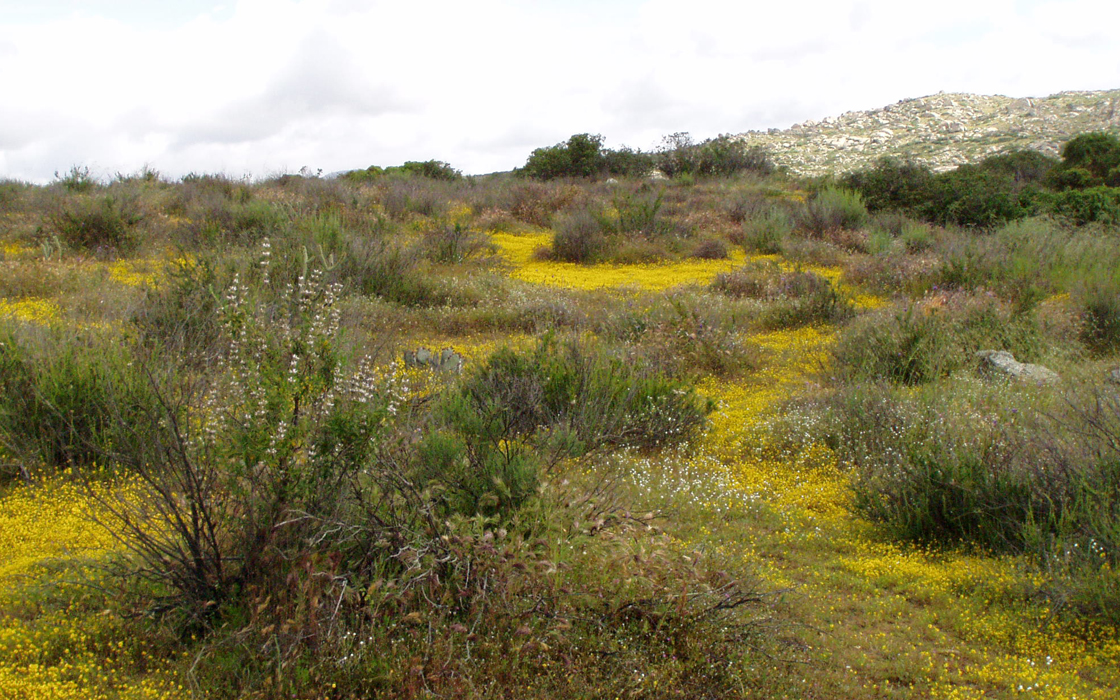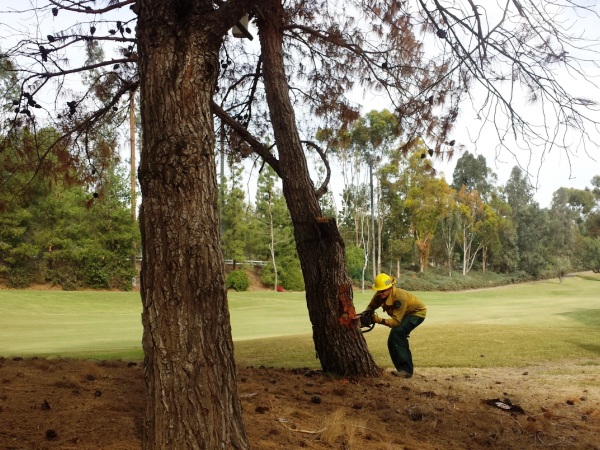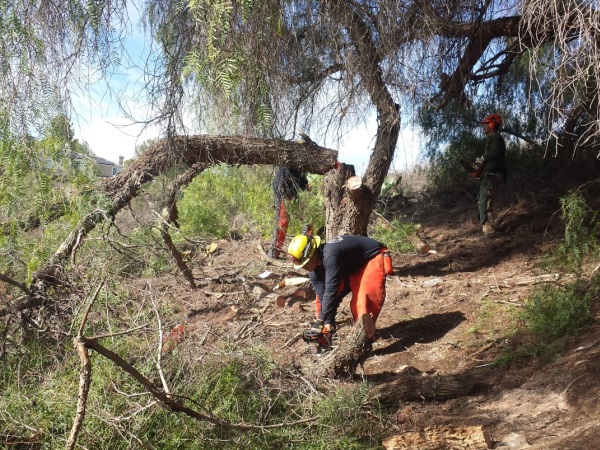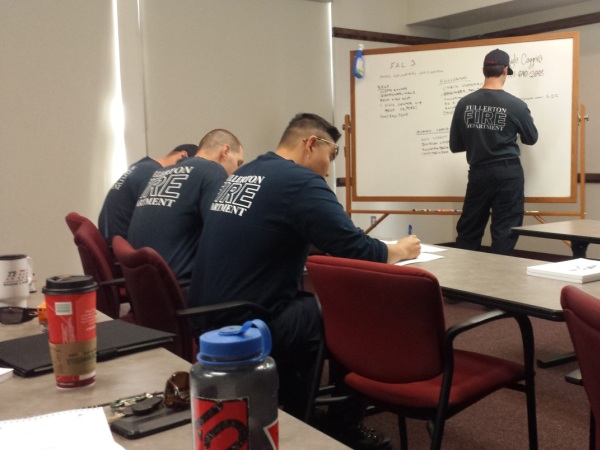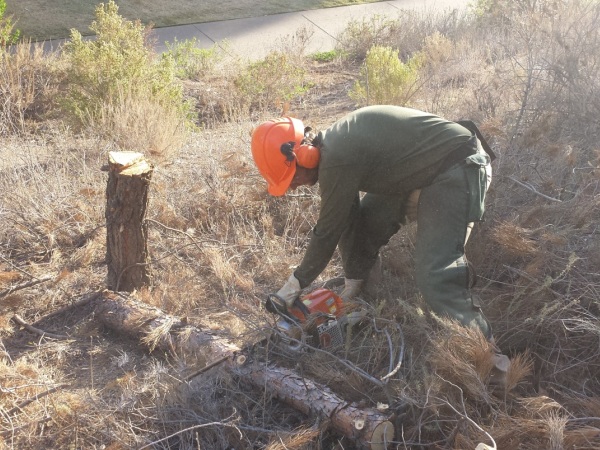CNLM Partners with Fullerton and Brea Fire Departments to help restore Coastal California Gnatcatcher Habitat at Coyote Hills East Preserve
What do fire departments, a threatened bird species, and the Center for Natural Lands Management all have in common? The answer was provided during six intense sessions in December 2015 and January 2016 on CNLM’s Coyote Hills East Preserve, located in the City of Fullerton, CA. The Preserve was created to protect the federally threatened coastal California gnatcatcher that lives in coastal sage scrub vegetation. However, before CNLM took over management and protection of the Preserve over 10 years ago, non-native trees had been planted – including California pepper trees, African sumac, and Aleppo pines. Although some attempts had been made to remove them, many of the trees had resprouted and other non-natives had added to their ranks, including Brazilian pepper and eucalyptus.
With dozens of invasive trees on the Preserve, CNLM partnered with the Brea and Fullerton Fire Departments to hold a sawyer class on the Preserve. The goal of the class was two-fold: for the firefighters to gain a sawyer certification so that they can safely operate chainsaws on wildland fires and to restore coastal California gnatcatcher habitat within the Preserve by removing invasive trees. Taking part in a sawyer class teaches fire fighters how to safely use a chainsaw by participating in a classroom portion and a field portion that consists of falling trees. The fire departments were interested in working with CNLM on a sawyer class because they normally have trouble locating sufficient numbers of non-native trees that need to be removed to train a large group of firefighters.
In all, fifteen firefighters and two CNLM employees participated in the class and gained sawyer certification. Over 100 non-native trees were removed (on both CNLM’s Preserve and adjacent golf course and Chevron properties, with their permission). In addition, over ½ acre of the invasive castor bean was removed. Stumps of the fallen trees were treated to ensure the trees would not resprout and spread throughout the Preserve.
The fire departments and the gnatcatcher were not the only ones who gained something from this project: in fact, the local residents surrounding the Preserve were also pleased when over 25 pepper trees were removed from a soon-to-be CNLM Preserve that is currently on Chevron property. These pepper trees had created an area that was frequently used by trespassers, with associated night noise and litter accumulation. The fire departments and CNLM removed a great deal of trash as well as the trees. The local residents thanked CNLM and the fire departments and were relieved that the area is no longer attractive for trespass and loitering.
The areas on the Preserve where trees were removed will be restored with native plants by seeding with California buckwheat, California sagebrush, California encelia, black sage, white sage, and lemonade berry during the winter and fall of 2016 to help create additional gnatcatcher habitat.



